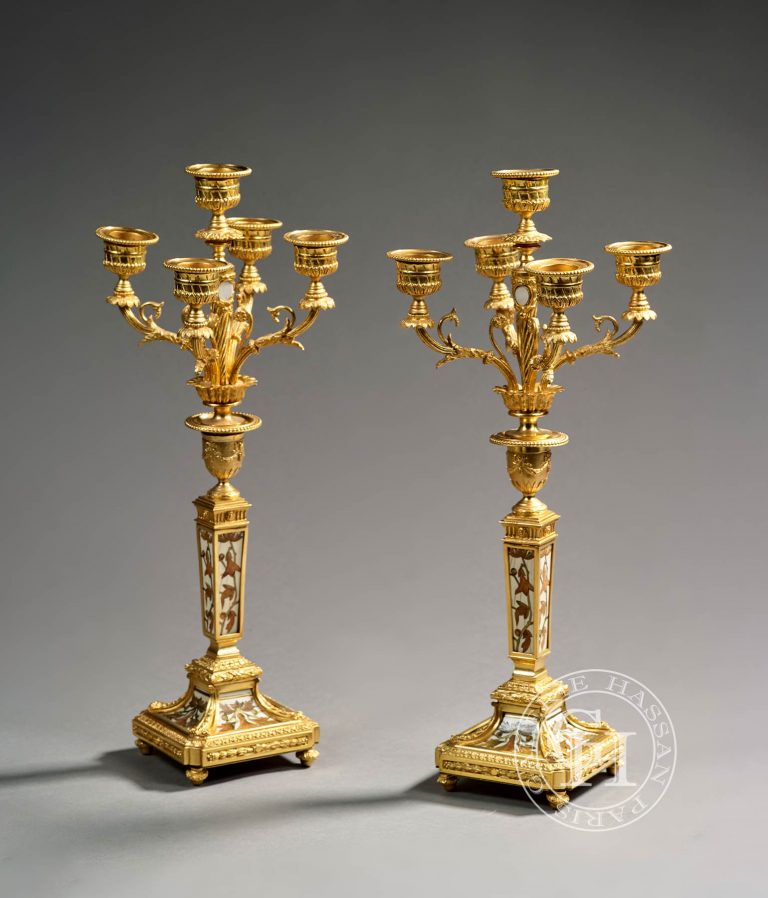Cabinetmaker
Ferdinand DUVINAGE
1823-1876
From 1863, Ferdinand Duvinage (1823-1876) ran a store of paintings and fans. In 1867, he joined forces with Alphonse Giroux by taking over the business on Boulevard des Capucines. This association allows him to affix the brand “Maison Giroux Paris” then “Ancienne Maison Giroux” on the frames of his creations.
On May 6, 1874, Ferdinand Duvinage filed a first patent for “a kind of mosaic marquetry with metal partitions for furniture and works of art”. This patent filed by Duvinage is truly original. The process he invented consists of “the combined union of ivory as a background, wood, dyed or exotic, for designs or ornaments, and copper or other metal to partition the ivory fragments”. The ivory is intended to form the bottom and is therefore hollowed out to “house the wooden mosaic” and the copper wires. These, most often, represent the branches and stems of plant elements. The first patent is completed by two additions.
Indeed, in February 1876, Duvinage imagined replacing ivory with a wood imitating “ivory yellowed by time”, in this case boxwood. A few months later, in November 1876, he proposed to further enrich the decoration of furniture and objects in cloisonné ivory by adding “metal or other material appliques representing birds, animals, shrubs, flowers, foliage, fruits, etc.” , with inlays of pearls or precious stones ”. This type of ornamentation is however not very present in Duvinage’s work; most of the time, his productions are confined to the technique described in his first patent, without protruding elements.
The decorations are always linked to nature, most often with birds or plant elements, in a Japanese style. In 1876, Rosalie Duvinage, called “the widow Duvinage”, took over the business on the death of her husband and took an invention patent in 1877 for a style of Japanese-inspired marquetry, allowing to add to the previous patent a mother-of-pearl decoration. To date, we do not know of any piece of furniture, object or panel bearing a mother-of-pearl decoration.
The works resulting from this marquetry technique were exhibited at the Universal Exhibition of 1878 (D. Kisluk-Grosheid, ‘Maison Giroux and its’ Oriental ‘Marquetry Technique’, Furniture History: The Journal of The Furniture History Society, 1998, Vol . 34). The widow Duvinage ceased her activity in 1882. Taken over by A. Philippe and E. Arnut from 1883 to 1884, the old Giroux house ceased all activity in 1885.

